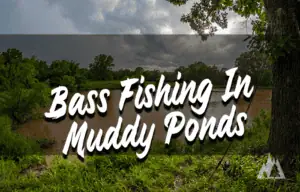What Is the Best Color Worm for Bass Fishing? (Top Colors You Should Always Have)
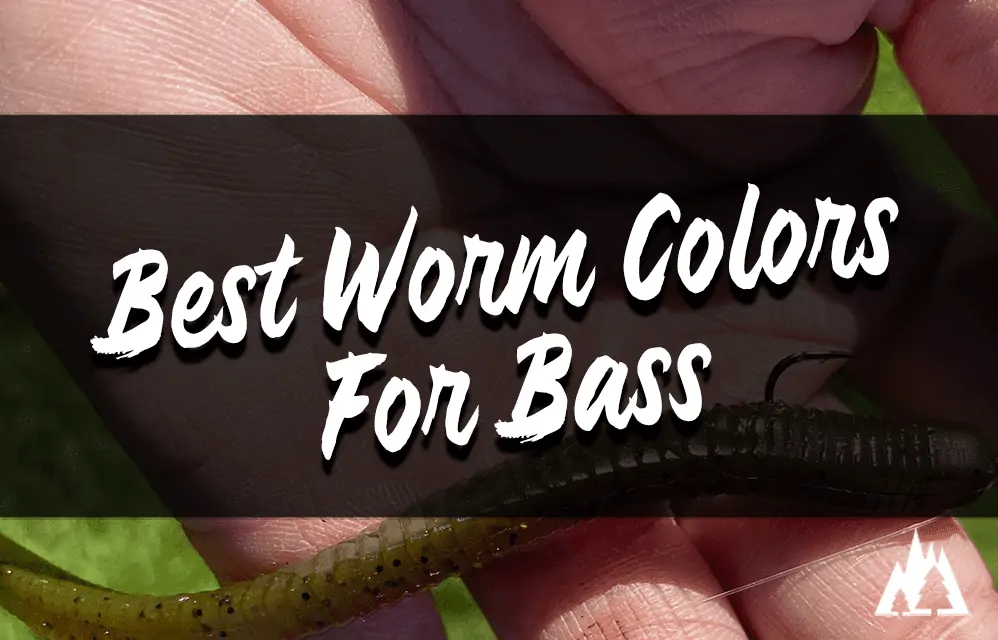
So what is the best color worm for bass fishing? There isn’t one “best” color for every situation.
There are, however, colors that you should always have on hand.
Colors that have been proven to catch bass.
Whether you’re a beginner or an experienced angler, having an understanding of what colors work best in different conditions can make all the difference when trying to catch bass.
I was shopping at my local tackle shop one day and overheard the owner say the last two years (shortly after the pandemic hit) were the best years for the tackle industry.
Whether it was camping, hiking, or fishing, many people opted outside more than ever.
I started seeing many new faces at our local fishing ponds.
I met some cool people and had great conversations along the way.
And one question I was asked was what’s the best color worm for bass fishing.
This is a tricky question because even if you’re fishing at the same pond, the color that attracts bass to bite can change daily.
But…
There are some general rules or guidelines that have worked well for me.
Does worm color matter for bass? Absolutely.
And in some ponds I fish at, certain colors matter more than others.
Just like how I use different types of lures for different lakes.
Why?
Because sometimes, when a pond is highly pressured with anglers day in and day out, it’s good to present bass with something they haven’t seen before.
I’ll go over what color worms you should absolutely have in your tackle box at all times.
And a few other color combinations to throw as a backup plan.
I’ll explain which worms are my go-to choice and why they may be more effective than others.
We’ll look at what works best in general, during summer, spring, fall seasons, and clear vs. stained water.
Plus, I’ll explain why plastic worm colors really matter when it comes to catching bass.
At the end of this guide, you’ll be well-equipped to catch bass with the set of colors I’ll be showing you below.
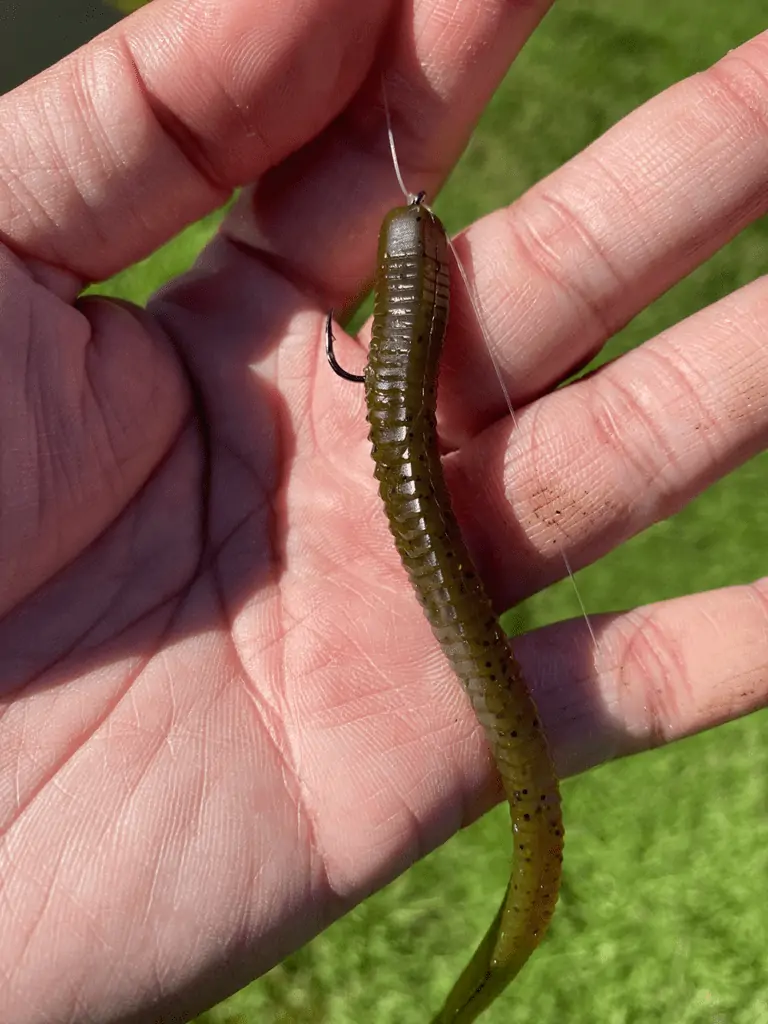
Best Worm Colors for Bass Fishing
If you’re new to bass fishing, you’ll want to read this guide before buying plastic worms.
There are a few factors to consider when choosing worms and other bass lures:
- The type of water you’re fishing in (clear or stained)
- The time of year
- What kind of baitfish are present
This all plays a role in determining which colors will work best.
In general, though, some good starting points are natural earth tones like green pumpkin, watermelon, black, blue, brown, and Junebug. These colors tend to be versatile and produce results in a variety of conditions.
Green pumpkin is one of the most popular choices for bass fishermen due to its versatility and effectiveness across different types of water clarity.
It mimics many kinds of baitfish found throughout North America and works well during both day and night fishing trips.
Green pumpkin also has an added benefit as it can help attract larger fish when used with heavier weights on deeper structures such as ledges, humps, and laydowns where big bass often lurk.
Black or blue is another great option that produces consistent results for anglers looking to target largemouths, smallmouths, and spotted bass.
This color combination works particularly well in clear waters since it provides excellent contrast against lighter backgrounds while still blending into darker areas around structures like logs or rocks where these fish may hide out during the day.
Finally, don’t forget about chartreuse.
Chartreuse colored baits have become increasingly popular in recent years due to their ability to stand out more than other shades under certain lighting conditions.
This makes them especially effective during low light periods, such as early morning hours before sunrise or late evening after sunset when visibility is limited, but activity levels remain high among feeding gamefish species like bass throughout much of North America’s lakes and rivers.
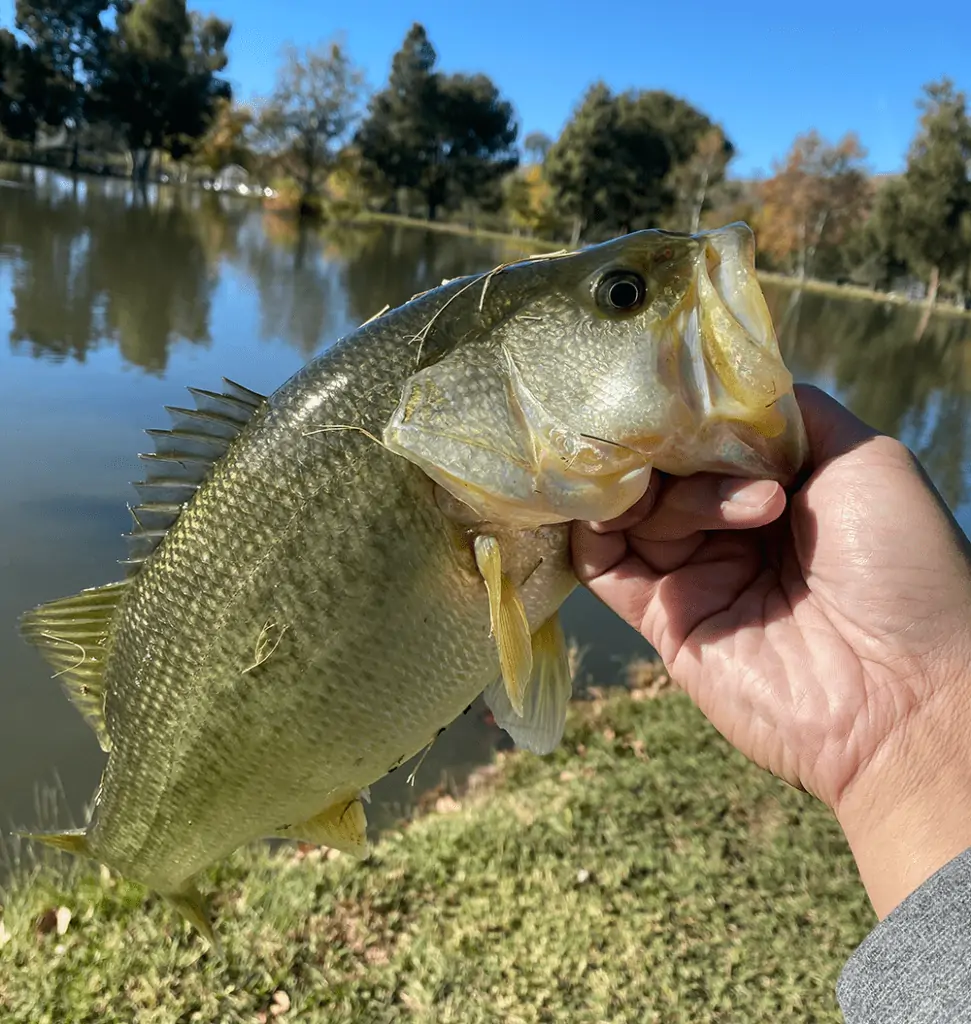
Clear Water vs. Stained Water: What Colors To Use?
The clarity of the water can have a big impact on bass fishing success, so it’s important to know the difference between clear and stained water when selecting bait colors.
In general, clear water requires lighter colors, and stained or muddy water calls for darker shades. The reason behind this is that in murky conditions, fish are more likely to strike based on movement and vibration rather than sight. Therefore, a brightly colored worm will stand out more against a dark background and attract attention.
In clear waters like lakes or rivers with low turbidity levels, natural-colored worms, as well as light-colored options such as chartreuse or white are ideal because they’ll be easier for the fish to spot from afar.
The lighter colors also reflect sunlight better, which helps them stand out even further in open waters where there’s plenty of natural light available during daytime hours.
On the other hand, when fishing in stained or muddy waters, you should opt for darker shades like black or purple since they won’t be easily visible due to the lack of visibility caused by sediment particles suspended in the water column.
These deeper tones will still provide enough contrast against their environment so that bass can detect them through their lateral line system, which allows them to sense vibrations from nearby prey items moving around them underwater.
The type of plastic worm you use also plays an important role when it comes to selecting a color scheme that works best for your situation, whether you’re using finesse worms with thin tails designed specifically for slow presentations near the bottom or bulky creature baits meant to mimic large crawfish scurrying across rocks at high speeds makes all the difference between success and failure.
Finally, remember that although certain colors may work better than others depending on environmental factors, such as the clarity level of your local body of water, don’t forget about experimenting with different combinations until you find one that consistently produces results.
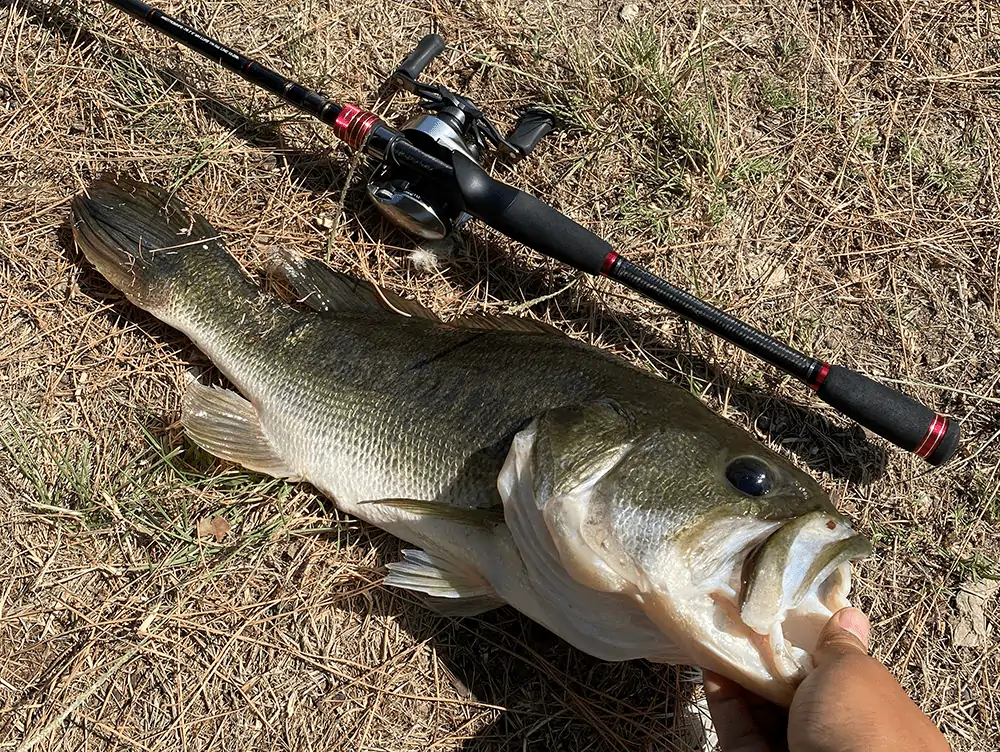
Best Summer Worm Colors
Bass are more active in warmer months and are often found in shallower waters, so having a few go-to worm colors is key for successful angling.
Red worms have been proven effective when targeting summer bass. The bright color stands out against murky water and attracts attention from nearby fish.
Pink worms also work well during this time of year as they mimic natural prey like crayfish or shrimp that bass feed on regularly.
Orange and yellow worms can be used as well. These lighter shades blend into their environment but still draw enough attention to entice a bite from curious fish.
Overall, choosing the right color worm for your next outing can help you land more bites this season. Experiment with different hues until you find what works best in your area; there is no one size fits all solution when it comes to catching fish.
Spring and Fall Worm Colors
During the spring and fall months, when water temperatures are cooler, and fish become more active, certain colors stand out better than others.
When everything is starting to green up again in the springtime, try using brighter shades of reds, oranges, or yellows. These colors will stand out against the darker backgrounds that are common during this time of year.
Chartreuse tones also work well as they contrast against dark waters but blend in with lighter areas like grass beds or shallow flats.
As we move into the fall and winter months, darker colors tend to be more effective for catching bass. Reds and oranges are great choices as they appear natural in deeper waters where there isn’t much light penetration.
If you’re fishing near weeds or wood cover, then browns or greens may be a better option since these shades blend in nicely with their surroundings while still providing enough contrast for fish to notice them from afar.
No matter what season it is, always keep an eye on your local conditions before deciding which worm color works best for you.
Clear water requires different techniques than stained water, such as lighter line and more finesse worms.
Consider experimenting with different styles of plastic worms, such as ribbed worms (which create vibrations underwater) or paddle tail worms (which have lifelike movements). The key is finding something that appeals to both your own preferences and those of the bass.
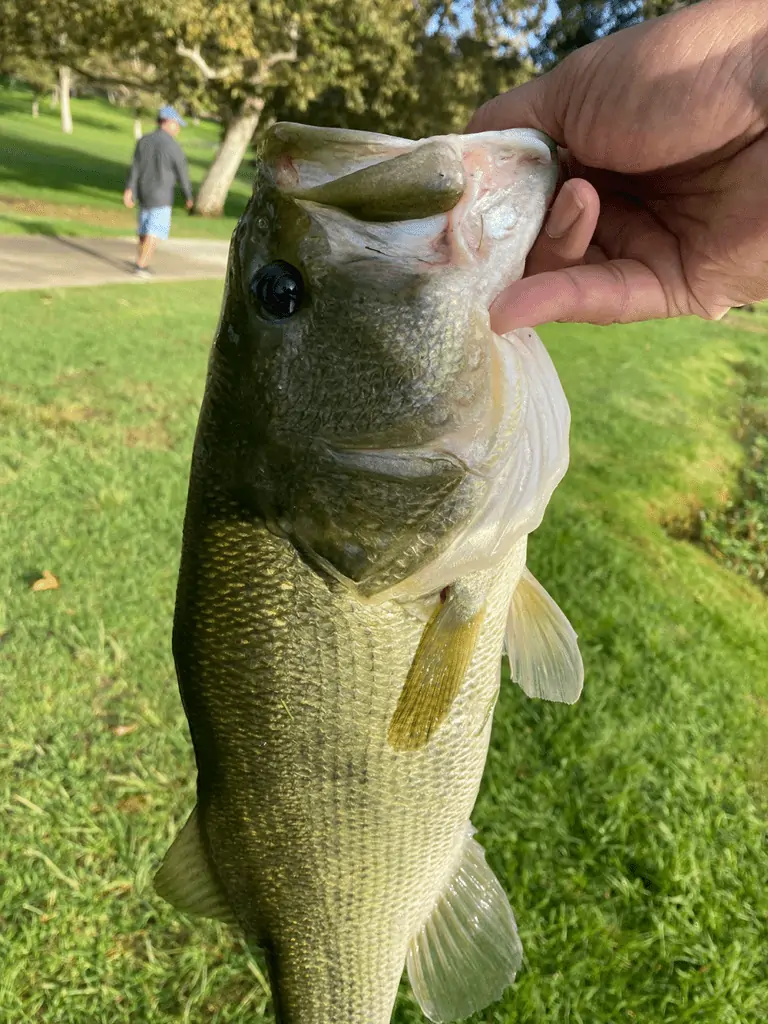
Does Color Really Matter?
From personal experience, color does matter. A lot.
But there isn’t a universal “best” color to use for every lake and every situation.
Ultimately, the answer is personal preference and what works best for you.
If you have had success with one particular type or color of worm in the past, then stick with it.
However, if you are just starting out or looking to switch things up a bit, use this guide to help your decision-making process.
The most important thing is that you find something that produces results consistently.
Whether it’s a specific brand/color/style combo or simply trial-and-error until something clicks.
Only experience will tell you what works best under different conditions at different times throughout each season.
The right color plastic worm can be the difference between success and failure when bass fishing, so it is important to choose wisely.
And I highly suggest you read the following to help you catch more fish:

